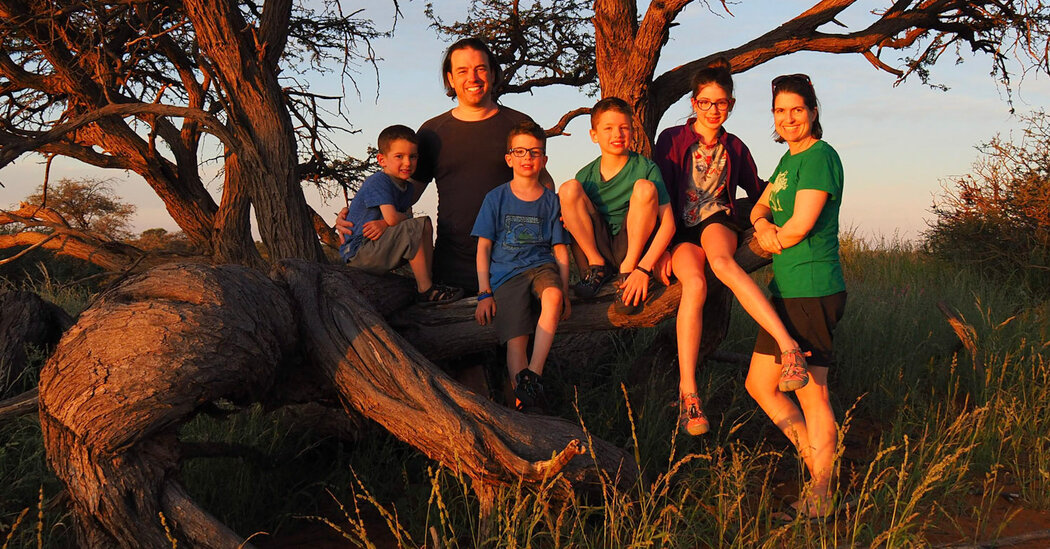For their youngest son’s fifth birthday this summer, Edith Lemay and her husband took their children on a hot-air balloon ride above central Turkey that began before dawn.
As the sun rose over the Cappadocia region, it revealed other balloons floating in the sky and some chimney-like rock formations on the ground below — a transcendent experience that her 9-year-old likened to a dream. “That’s what we all felt because it was way too magical,” Ms. Lemay said.
Six months ago, Ms. Lemay, 44, and her husband, Sebastien Pelletier, 45, left their home in the Montreal area for a yearlong trip across Asia and Africa. Three of the French Canadian couple’s four children have a rare eye condition that has already impaired their vision and will slowly destroy it entirely unless an effective treatment materializes. The trip is a chance for them to see memorable sites while they still can.
In another sense, Ms. Lemay said, her family’s journey across Asia and Africa is a catalyst for her three children with retinitis pigmentosa — Laurent, 5, Colin, 7, and Mia, 11 — to develop what she called “solution-oriented” behavior in the face of setbacks large and small, a habit that could prove useful as their eyesight continues to diminish. (Her oldest boy, Leo, 9, does not have the condition.)
Ms. Lemay said she also hoped the trip would force her children to appreciate how lucky they are in a world where many of their peers do not have electricity in their homes, books in their schools or other comforts that people in wealthy countries take for granted.
“I want them to look at their life and see what’s good, what’s beautiful in it,” she said by phone last month from Indonesia, as Laurent splashed in a nearby swimming pool. “Not the little problem with their eyes.”
The prognosis
Retinitis pigmentosa encompasses a group of hereditary disorders that affect an estimated one in 3,000 to 4,000 people worldwide, including as many as 110,000 in the United States, according to the National Organization for Rare Disorders, a nonprofit in Massachusetts. It causes slow degradation of the retina, and the symptoms can develop over decades.
People with retinitis pigmentosa typically begin to lose their vision during childhood. In the next phase of the disease’s progression, they start to lose their peripheral vision, making it hard for some children to play sports or to avoid bumping into their classmates in the hallways, said Alfred S. Lewin, a professor…
Click Here to Read the Full Original Article at NYT > Travel…
